Chiropractic Health & Wellness Blog
When to take my child to see a Chiropractor
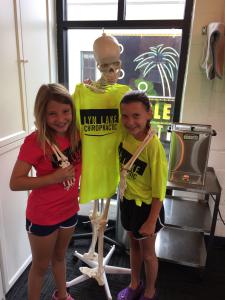 |
Unless your child has obvious problems it can be difficult for a parent to know when a child’s spine is not working correctly. There are some signs which can indicate spinal problems.
These include:
- Sleeping patterns changing for the worse
- Breastfeeding difficulties
- Can't turn their head to one side
- One shoulder higher than the other as you stand behind them
Common childhood disorders can also be linked with spinal dysfunction, these include:
- Having too many ear infections
- Regular sore throats and colds
- Colic/reflux
- Asthma
- Scoliosis
- Headaches - child should not have headaches!
- Bedwetting and/or constipation
- Growing pains - usually the muscles are sore from the bones growing and muscles catching up.
- ADHD
Spinal misalignments that may occur at the time of the injury will not necessarily result in immediate pain or symptoms.
In addition to physical stress, parents should be aware that emotional and chemical stress affect the child’s nervous system and may also warrant a spinal check up and maybe some regular adjustments.
Having three girls and very active in sports, there has been many times I was able to help them. And, there has many times we had to take them in to see an Orthopedic for broken bones, but even after they getthe cast off we were able to help them get there already sore muscles to heal faster with some hands on massage, stretching, Rock Taping and other physiotherapy. When look for a chiropractor or a chiropractic clinic, one advice I tell people is, see if that chiropractor has child of his own. Chiropractic care for children is for sure something worth checking into.
Read Less
When to take my child to see a Chiropractor
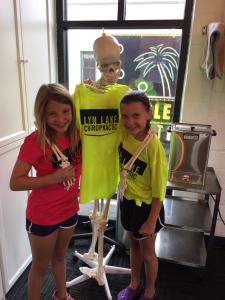 |
Unless your child has obvious problems it can be difficult for a parent to know when a child’s spine is not working correctly. There are some signs which can indicate spinal problems.
These include:
- Sleeping patterns changing for the worse
- Breastfeeding difficulties
- Can't turn their head to one side
- One shoulder higher than the other as you stand behind them
Common childhood disorders can also be linked with spinal dysfunction, these include:
- Having too many ear infections
- Regular sore throats and colds
- Colic/reflux
- Asthma
- Scoliosis
- Headaches - child should not have headaches!
- Bedwetting and/or constipation
- Growing pains - usually the muscles are sore from the bones growing and muscles catching up.
- ADHD
Spinal misalignments that may occur at the time of the injury will not necessarily result in immediate pain or symptoms.
In addition to physical stress, parents should be aware that emotional and chemical stress affect the child’s nervous system and may also warrant a spinal check up and maybe some regular adjustments.
Having three girls and very active in sports, there has been many times I was able to help them. And, there has many times we had to take them in to see an Orthopedic for broken bones, but even after they getthe cast off we were able to help them get there already sore muscles to heal faster with some hands on massage, stretching, Rock Taping and other physiotherapy. When look for a chiropractor or a chiropractic clinic, one advice I tell people is, see if that chiropractor has child of his own. Chiropractic care for children is for sure something worth checking into.
Read Less
How to Shovel Snow Without Hurting Your Back
 |
Does this mean that you are stuck with it until spring arrives if you want to keep your back in good health? Of course not. While you can’t always avoid injury 100 percent of the time, there is a way to shovel snow that is better for your spine and all of the muscles and soft tissues that surround it.
Proper Snow Shoveling Technique
Ideally, protecting your back starts before you even pick up a snow shovel. Because moving snow from one area to another is rather physical Quick read more or view full article in nature, you want to make sure your muscles are warmed up and ready to work. One way to do this is to walk in place or on a treadmill for a few minutes. If you have a stationary bike or some other cardiovascular exercise equipment, that would work too.
Once you’re ready to go outside and start moving the white stuff, using proper technique can save you from a lot of discomfort and low back pain.
The safest method, according to the experts at Spine-health, involves:
- Directly facing the snow or ice you intend to move.
- Putting one hand on the handle of the shovel and the other as close to the shovel itself as possible.
- Instead of bending your back to pick it up, bend at the hips first and then the knees, utilizing your leg muscles to do a majority of the work.
- When you go to move the snow, move your entire body in the new direction versus just twisting your back.
- Walk the shovel of snow or ice to the new location and drop it, minimizing injury from heaving or throwing it.
Do these five things and you’ll reduce your risk of back injury while getting rid of the snow and ice we commonly get in the Minneapolis area. Also, make sure you come in for your regular chiropractic visits too and the staff at Lyn Lake Chiropractic will do our best to keep you back pain free! Minneapolis Chiropractor at Lyn Lake Chiropractic 612-879-8000 Read Less
The Graston Technique: What It Is and Why We Use It
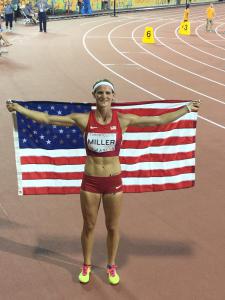 |
The Graston Technique: What It Is and Why We Use It
Here at Lyn Lake Chiropractic, our goal is to help all of our Minneapolis patients achieve maximum health and wellness. That’s why we pride ourselves on offering a variety of different techniques designed to both prevent and treat musculoskeletal issues. And one that we use regularly is the Graston Technique.
What Is the Graston Technique?
The Graston Technique is a method which involves using stainless steel instruments to help effectively reach scar tissue or other soft tissue adhesions and get them to release, providing you with greater movement and less pain. The goal of the Graston Technique is to resolve both the symptoms and the cause of the issue, which means short and long-term relief.
Chiropractors aren’t the only ones that use the Graston Technique either. It is also commonly used by physical therapists,
Quick read more or view full article
athletic trainers, and other types of therapists and medical professionals in a number of different fields. What makes this technique so desirable to health care workers around the world?
Why Do We Use It?
Well, the reason we use the Graston Technique at Lyn Lake Chiropractic is simple: It works. There have been numerous research studies on this particular method of treatment and many have found extremely positive results.
For instance, one study published in the Journal of Manipulative and Physiological Therapeutics involved 10 subjects with plantar fasciitis. Plantar fasciitis, foot pain is diagnosed when the band of tissue that runs along the bottom of your foot becomes inflamed, resulting in heel pain—especially first thing in the morning. However, after just a few treatment sessions using the Graston Technique and doing some in-home stretches, the participants experienced less pain and greater functionality.
Additionally, this technique is good for sports-related injuries. For example, a University of Wisconsin study published in the Journal of Undergraduate Kinesiology Research involved 14 athletes and assessed the range of motion in their shoulders before, during, and after engaging in care with the Graston Technique. Based on the results, the researchers concluded that this particular technique helped improve shoulder motion, which makes it a great addition to the standard stretching and strengthening training programs.
To find out if the Graston Technique can help you ease your pain or discomfort, call our Minneapolis chiropractic office today and schedule an appointment 612-879-8000. We’ll do what we can to get you the relief you deserve!
Running Shoe, Which is right for you!
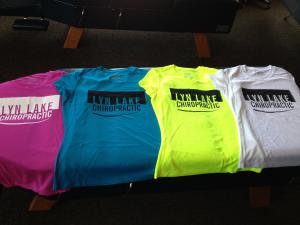 |
Which Type of Running Shoe Is Right for You?
Because runners with different arch heights are prone to different injuries, running shoe manufacturers have developed motion-control, stability and cushion running shoes for low-, neutral- and high-arched runners, respectively.
To control the excessive pronation present in low-arched individuals, motion-control running shoes have added midsole material beneath the center of the arch. On the other side of the spectrum, cushion Quick read more or view full article running shoes are made for runners with high arches and are manufactured with a curve-lasted shape designed to fit the typical high-arched foot.
In order to improve shock absorption, the midsoles in cushion running shoes are significantly softer. To fit runners with neutral feet, stability running shoes are made with semi-curved lasts and only a moderate amount of midsole cushioning.
For more than 30 years, running shoe manufacturers have suggested that prescribing running shoes based on arch height will reduce injury rates and increase comfort. Surprisingly, despite the fact that consumers have spent billions of dollars for just the right running shoe, there is conflicting evidence suggesting the prescription of running shoes based on arch height is clinically justified.
Arch Height, Shoe Type and Injury Rates
In one of the largest studies done to date, Knapik, et al., divided 1,400 male and female Marine Corps recruits into two groups: an experimental group in which running shoe recommendation was based on arch height, and a control group that wore neutral stability running shoes regardless of arch height. After the subjects completed an intensive 12-week training regimen, the authors concluded that prescribing running shoes according to arch height was not necessary, since there was no difference in injury rates between the two groups.
In another study evaluating the value of prescribing running shoes according to arch height, Ryan, et al., categorized 81 female runners as supinators, neutral or pronators, and then randomly assigned them to wear neutral, stability or motion-control running shoes. Again, the authors concluded that there was no correlation between foot type, running shoe use and the frequency of reported pain.
One of the more interesting findings of this research was that the individuals classified as pronators reported greater levels of pain when wearing the motion-control running shoes. This is consistent with the hypothesis that excessive midsole thickness may dampen sensory input, amplifying the potential for injury because the athlete can't "feel the ground."
Supporting the belief that running shoe prescription should continue to be based on arch height, several high-quality laboratory studies have shown that the different types of running shoes actually do what they are supposed to do: Motion-control running shoes have been proven to limit pronation, and cushion running shoes have been proven to improve shock absorption.
To prove this, researchers measured arch height and evaluated impact forces, tibial accelerations, and the range and speed of pronation after high- and low-arched runners were randomly assigned to wear cushion and motion-control running shoes. The detailed analysis confirmed that motion-control running shoes do, in fact, control rearfoot motion better than cushion running shoes; and cushion running shoes attenuate shock better than motion-control running shoes.
In a study evaluating the effect of motion-control versus neutral shoes on overpronators, Cheung and Ng used electrical devices to measure muscle activity as subjects ran 10 kilometers. The authors noted that when wearing motion-control shoes, runners who pronated excessively reported reduced muscular fatigue in the front and sides of their legs.
In a separate study of excessive supinators, Wegener, et al., evaluated pressure along the bottom of the foot when high-arched individuals wore either cushion running shoes or motion-control shoes. The authors confirmed that the cushion running shoes more effectively distributed pressure and were perceived as being more comfortable than the motion-control running shoes.
The results of the previously listed studies suggest the practice of choosing running shoes based on arch height has merit, particularly for people on the far ends of the arch height spectrum.
Which Running Shoe? The Most Important Factors to Consider
When you look at all of the research evaluating running shoe prescription and injury, it becomes clear that the most important factors to consider when selecting a running shoe are that it fits the foot perfectly (width, length and shape), and that the midsole is comfortable. The size of the shoe is determined by matching the widest part of the forefoot to the widest part of the toe box, and there should be a few millimeters of space between the tip of the longest toe and the end of the running shoe. The shoe's upper also should comfortably fit the shape of the foot.
An important factor to consider when prescribing a running shoe is that the midsole should also be selected in part by running style: Heel strikers often need additional cushioning beneath the rearfoot, while midfoot strikers typically prefer zero-drop midsoles. In almost all situations, even extremely flat-footed runners should think twice about wearing heavy motion- control running shoes because they may dampen sensory input from the foot and their extreme stiffness often results in ankle and/or knee injuries.
In order to identify the midsole that is right, experiment with a range of running shoes until you find just the right thickness, stiffness and downward slope.
Though rarely discussed, perhaps the most important attributes of a midsole is its overall stiffness. In my experience, the stiffness of a running shoe midsole is the most important factor associated with comfort and injury prevention. You can easily evaluate midsole stiffness by twisting it in several directions while grabbing the heel and forefoot.
There is a surprising amount of variation in midsole stiffness, as running shoes will bend with anywhere from 5-50 pounds of force. The best running shoes will bend with very little pressure, allowing your feet to move freely in all directions.
Unfortunately, manufacturers rarely provide information regarding overall stiffness, and it is important for runners to know the precise degree of midsole stiffness that is most comfortable for them. High-arched runners tend to be drawn to extremely flexible midsoles, while low-arched runners usually prefer a slightly stiffer midsole. The extremely stiff midsoles are almost universally uncomfortable.
The bottom line with all the research on running shoe prescription is that you are always the best judge of which running shoe is right for you. However, keep in mind that heavy motion-control shoes may interfere with proprioception, while minimalist running shoes, such as the "five-finger" running shoes, are too thin to provide adequate protection and have recently been proven to produce very high injury rates. As a general rule, most runners will do best with lightweight stability shoes that match the shape of their feet.
Thomas Michaud, DC, is the author of Injury-Free Running
We thought this was a good article for runners looking for shoes and questions they can ask at the running stores when your buying a new pair of shoes. If you have any type of running injuries with foot pain, ankle pain, achiile pain and knee pain please feel free to contact Lyn Lake Chiropractic or find a good sports chiropractor.
Running Shoe, Which is right for you!
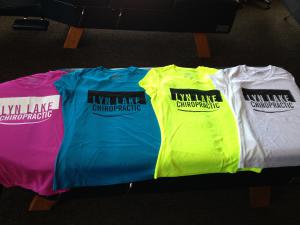 |
Which Type of Running Shoe Is Right for You?
Because runners with different arch heights are prone to different injuries, running shoe manufacturers have developed motion-control, stability and cushion running shoes for low-, neutral- and high-arched runners, respectively.
To control the excessive pronation present in low-arched individuals, motion-control running shoes have added midsole material beneath the center of the arch. On the other side of the spectrum, cushion Quick read more or view full article running shoes are made for runners with high arches and are manufactured with a curve-lasted shape designed to fit the typical high-arched foot.
In order to improve shock absorption, the midsoles in cushion running shoes are significantly softer. To fit runners with neutral feet, stability running shoes are made with semi-curved lasts and only a moderate amount of midsole cushioning.
For more than 30 years, running shoe manufacturers have suggested that prescribing running shoes based on arch height will reduce injury rates and increase comfort. Surprisingly, despite the fact that consumers have spent billions of dollars for just the right running shoe, there is conflicting evidence suggesting the prescription of running shoes based on arch height is clinically justified.
Arch Height, Shoe Type and Injury Rates
In one of the largest studies done to date, Knapik, et al., divided 1,400 male and female Marine Corps recruits into two groups: an experimental group in which running shoe recommendation was based on arch height, and a control group that wore neutral stability running shoes regardless of arch height. After the subjects completed an intensive 12-week training regimen, the authors concluded that prescribing running shoes according to arch height was not necessary, since there was no difference in injury rates between the two groups.
In another study evaluating the value of prescribing running shoes according to arch height, Ryan, et al., categorized 81 female runners as supinators, neutral or pronators, and then randomly assigned them to wear neutral, stability or motion-control running shoes. Again, the authors concluded that there was no correlation between foot type, running shoe use and the frequency of reported pain.
One of the more interesting findings of this research was that the individuals classified as pronators reported greater levels of pain when wearing the motion-control running shoes. This is consistent with the hypothesis that excessive midsole thickness may dampen sensory input, amplifying the potential for injury because the athlete can't "feel the ground."
Supporting the belief that running shoe prescription should continue to be based on arch height, several high-quality laboratory studies have shown that the different types of running shoes actually do what they are supposed to do: Motion-control running shoes have been proven to limit pronation, and cushion running shoes have been proven to improve shock absorption.
To prove this, researchers measured arch height and evaluated impact forces, tibial accelerations, and the range and speed of pronation after high- and low-arched runners were randomly assigned to wear cushion and motion-control running shoes. The detailed analysis confirmed that motion-control running shoes do, in fact, control rearfoot motion better than cushion running shoes; and cushion running shoes attenuate shock better than motion-control running shoes.
In a study evaluating the effect of motion-control versus neutral shoes on overpronators, Cheung and Ng used electrical devices to measure muscle activity as subjects ran 10 kilometers. The authors noted that when wearing motion-control shoes, runners who pronated excessively reported reduced muscular fatigue in the front and sides of their legs.
In a separate study of excessive supinators, Wegener, et al., evaluated pressure along the bottom of the foot when high-arched individuals wore either cushion running shoes or motion-control shoes. The authors confirmed that the cushion running shoes more effectively distributed pressure and were perceived as being more comfortable than the motion-control running shoes.
The results of the previously listed studies suggest the practice of choosing running shoes based on arch height has merit, particularly for people on the far ends of the arch height spectrum.
Which Running Shoe? The Most Important Factors to Consider
When you look at all of the research evaluating running shoe prescription and injury, it becomes clear that the most important factors to consider when selecting a running shoe are that it fits the foot perfectly (width, length and shape), and that the midsole is comfortable. The size of the shoe is determined by matching the widest part of the forefoot to the widest part of the toe box, and there should be a few millimeters of space between the tip of the longest toe and the end of the running shoe. The shoe's upper also should comfortably fit the shape of the foot.
An important factor to consider when prescribing a running shoe is that the midsole should also be selected in part by running style: Heel strikers often need additional cushioning beneath the rearfoot, while midfoot strikers typically prefer zero-drop midsoles. In almost all situations, even extremely flat-footed runners should think twice about wearing heavy motion- control running shoes because they may dampen sensory input from the foot and their extreme stiffness often results in ankle and/or knee injuries.
In order to identify the midsole that is right, experiment with a range of running shoes until you find just the right thickness, stiffness and downward slope.
Though rarely discussed, perhaps the most important attributes of a midsole is its overall stiffness. In my experience, the stiffness of a running shoe midsole is the most important factor associated with comfort and injury prevention. You can easily evaluate midsole stiffness by twisting it in several directions while grabbing the heel and forefoot.
There is a surprising amount of variation in midsole stiffness, as running shoes will bend with anywhere from 5-50 pounds of force. The best running shoes will bend with very little pressure, allowing your feet to move freely in all directions.
Unfortunately, manufacturers rarely provide information regarding overall stiffness, and it is important for runners to know the precise degree of midsole stiffness that is most comfortable for them. High-arched runners tend to be drawn to extremely flexible midsoles, while low-arched runners usually prefer a slightly stiffer midsole. The extremely stiff midsoles are almost universally uncomfortable.
The bottom line with all the research on running shoe prescription is that you are always the best judge of which running shoe is right for you. However, keep in mind that heavy motion-control shoes may interfere with proprioception, while minimalist running shoes, such as the "five-finger" running shoes, are too thin to provide adequate protection and have recently been proven to produce very high injury rates. As a general rule, most runners will do best with lightweight stability shoes that match the shape of their feet.
Thomas Michaud, DC, is the author of Injury-Free Running
We thought this was a good article for runners looking for shoes and questions they can ask at the running stores when your buying a new pair of shoes. If you have any type of running injuries with foot pain, ankle pain, achiile pain and knee pain please feel free to contact Lyn Lake Chiropractic or find a good sports chiropractor.
Cervical and Lumbar Disc Herniations and Chiroprac
Cervical and Lumbar Disc Herniations and Chiropractic Care
80% of the chiropractic patients studied had good clinical outcomes
By
William J. Owens DC, DAAMLP
Mark Studin DC, FASBE (C), DAAPM, DAAMLP
The highest prevalence of herniated lumbar discs is among people aged 30–50 years, with a male to female ratio of Quick read more or view full article 2:1. In people aged 25–55 years, about 95% of herniated discs occur at the lower lumbar spine (L4/5 and L5/S1 level); disc herniation above this level is more common in people aged over 55 years.[2]
Symptoms of a Cervical Herniated Disc
A cervical (neck pain) herniated disc will typically cause pain patterns and neurological deficits as follows:[3]
-
C4 - C5(C5 nerve root) - Can cause weakness in the deltoid muscle in the upper arm. Does not usually cause numbness or tingling. Can cause shoulder pain. - C5 - C6(C6 nerve root) - Can cause weakness in the biceps (muscles in the front of the upper arms) and wrist extensor muscles. Numbness and tingling along with pain can radiate to the thumb side of the hand. This is one of the most common levels for a cervical disc herniation to occur.
- C6 - C7(C7 nerve root) - Can cause weakness in the triceps (muscles in the back of the upper arm and extending to the forearm) and the finger extensor muscles. Numbness and tingling along with pain can radiate down the triceps and into the middle finger. This is also one of the most common levels for a cervical disc herniation.
- C7 - T1(C8 nerve root) - Can cause weakness with handgrip. Numbness and tingling and pain can radiate down the arm to the little finger side of hand.
The most common symptom of a lumbar disc herniation is pain. The pain is usually described as being located in the buttock with radiation down the back of the thigh and sometimes to the outside of the calf. The specific location may vary and depends on which disc is affected (and thus which nerve root is affected). The pain (and other symptoms and signs) come from pressure on the nerve root. The pain frequently starts as simple back pain and progresses to pain in the leg. When the pain moves to the leg, it is not unusual for the back pain to become less severe. Straining such as bowel movement, coughing or sneezing are all things that tend to cause the leg pain to worsen. Very large disc herniations may cause something known as the "cauda equina syndrome". This is a rare syndrome caused by a very large disc herniation putting pressure on many nerve roots. Signs and symptoms include urinary problems (either retention or incontinence), loss of leg or foot strength, "saddle" anesthesia (loss of sensation in the area of the body that would be in contact with a saddle), decreased rectal sphincter tone and variable amounts of pain (ranging from minimal to severe).[4]
A research paper published in a Peer Reviewed Medically Indexed Journal (scientific journal,) was conducted to evaluate how patients with disc herniations responded to chiropractic care. The authors stated “all patients were evaluated before commencement of chiropractic care by MRI scans for presence of disc herniations. Pre-care evaluations also included clinical examination and visual analog scores [asking them to rate their pain by using a number from 0 to 10]. Patients were then treated with a course of care that included traction, flexion distraction [a specific Chiropractic technique], spinal manipulative therapy, physiotherapy and rehabilitative exercises. All patients were re-evaluated by post-care follow-up MRI scans, clinical examination and visual analog scores. Percentage of disc shrinkage on repeat MRI, resolution of clinical examination findings, reduced visual analog pain scores and whether the patient returned to work were all recorded. This is an important study because it shows MRI scans pre-care and post-care.
The paper goes on to report “Clinically, 80% of the patients studied had a good clinical outcome with post-care visual analog scores accompanied with resolution of abnormal clinical examination findings. Anatomically, after repeat MRI scans, 63% of the patients studied revealed a reduced size or completely resorbed disc herniation (completely resolved.) One significant finding was “seventy-eight percent of the patients were able to return to work in their pre-disability occupations.”[5]
This study shows that Chiropractic care can be a very important part of treatment in patients, when clinically indicated with disc herniations. Injuries such as disc herniations can have a negative impact on the ability to work and complete personal tasks. Evaluating treatment options is paramount when deciding how best to fix the problem especially the non-surgical approach that Chiropractic offers to patients. If you have an injury to your spine, the first step is making sure that you are diagnosed effectively and efficiently, and then engage in treatment as quickly as possible. Although Chiropractic is effective in treating conditions in the early and late phases it has been shown to be most effective when started immediately.[6]
This study, along with many others concludes that a drug-free approach of chiropractic care is one of the best solutions to herniated discs. To find a qualified doctor of chiropractic near you, call Lyn Lake Chiropractic and speak to Dr Kevin Schreifels at 612-879-8000.
[1]http://www.asnr.org/spine_nomenclature/discussion.shtml